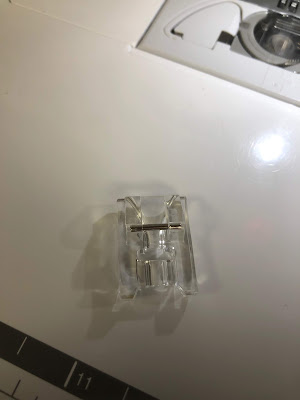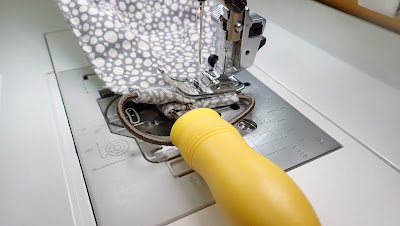I've been using the Craft Passion Mask pattern. It seems to fit better than the Olson mask pattern. You might want to try both, just to see how each works for you. I've also used the Canyonlands Quilt pattern. It has more pleats and takes more work. Thats the one in the photo above. He also has a mask made with the Craft Passion pattern.
I like the fitted style better than the pleated style because I think they offer better coverage, and I can put stabilizer in between the layers. The pleated style doesn't give me the option of an added stabilizer layer.
There are links at the end of the post to some YouTube videos that I found very helpful. There is a lot of information in them about what materials to use, and why they use them.
There are links in my post that go to products I use. I do not receive any money or commission if you click on them. You might be able to find things locally that will fit your needs.
This blog is not monitized. I don't make any money when you visit. You won't find advertisements popping up while you're trying to read instructions.
You're welcome.
Fabric and Supplies
100% cotton pre-washed fabric. If you have batik, use that because it has a tighter weave.
Wire for the nose piece. Some people are using a long pipe cleaner twisted double so that it's 2 pipe cleaners thick. It's soft and comfortable, but we don't know how long it will hold up in the wash.
Pins
Elmer's Washable School glue (optional)
Plastic beading foot or zipper foot to sew the wire in place.
 |
| Sorry for the farmer hands. I live on a farm, so it's to be expected. This is the beading foot I use. |
 |
| Top view. You might have one in your accessory case. I've seen some made out of metal, too. Yours may look slightly different. |
Some sort of non-woven interfacing. I'm using a medium weight cut away non-woven embroidery stabilizer from World Weidner. The videos below also offer other suggestions.
Cutting
 |
|
Cut two pieces of the Pocket Main Fabric Two pieces of Pocket Lining Fabric Two pieces of non-woven stabilizer or interfacing using the Pocket Lining Fabric |
Sewing
 |
| Place Main Fabric pieces right sides together. Place a piece of stabilizer interfacing on either side. Stitch the curved seam (center front seam) |
 | |
|
 |
| Serge or sew the center front seam of the Lining Fabric |
 |
| Pin the lining fabric to the main fabric along the top (curved) raw edges.... |
 |
| matching the center seams. |
| The lining fabric and the stabilizer/interfacing layers will line up and are shorter than the Front Main Fabric. The Front Main Fabric piece will be in 'sandwiched' in the middle. |
 |
| Sew or serge the top edge. Yeah... I know. It wasn't a great job because I was trying to video and serge at the same time. And then the video didn't turn out. |
 |
| The center seam by the nose flattens out nicely. |
 | |
|
 |
| The wire is snuggly sewn into the nose area at the top of the mask. |
 | |
|
 | |
|
 |
| Sew along the bottom seam. Turn the tube right side out. |
If the center bottom seam is bulky, feel free to hammer that to flatten it out.
You'll be top stitching over the bottom to keep the layers in place.
 |
| Fold the raw edge under it's encased in the seam. I glue my seams with Elmer's Washable School glue because sometimes that works better than pins. Either the white glue or the clear glue seem to work fine. It washes out after 1 washing so it isn't a problem. I always recommend people wash masks before they use them for the first time. |
 |
| If you would rather pin than glue, this is how I pin the casing. |
Sew along the ends where the elastic is to hold them in place. My video failed so you'll have to work with written directions.
 |
| I like a pleat along each side because I think the mask fits better. Lots of people are using a corn holder to make the pleat. |
 |
| Make sure you pleat the opposite direction when you get to the other side so both the pleats are facing the same direction on the front. |
 |
| Topstitch down one side, across the bottom, and up the other side. I don't topstitch along the top edge because the casing and wire hold the layers in place. This is a child's mask on an adult Styrofoam head. |
 | |
|
You can find the file here. It was created by a young scout named Quinn. We tried a few different styles, this one works best for us.
 |
| This is my grandson's mask before I started pleating the sides. It's just a little bit big. I also extended the sides a little on his mask so it is slightly wider (ear to ear) than the one in the instructions. |
 |
| I added pleats later, and the mask fits much better. |
These are the best videos I've found and used.
Thanks for reading!
Stay safe, stay healthy, stay hopeful!
I'm heading out to the barn to do the evening chores. If you have questions, please leave them in the comments and I'll be happy to answer them.







No comments:
Post a Comment